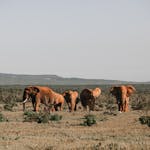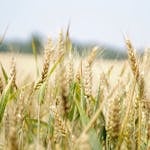Flying a drone in a National Wildlife Refuge is generally prohibited, and for good reason. These protected areas exist to conserve wildlife and their habitats, and the presence of drones can significantly disrupt this delicate balance.
Let me walk you through what I’ve learned about the rules and rationale behind these restrictions based on my research and personal experiences.
The Legal Landscape
As a drone enthusiast, I’ve always been cautious about where I can and can’t fly my drone.
When I first looked into flying in a National Wildlife Refuge, I quickly realized that it’s not as simple as bringing your drone along for some aerial photography.
The U.S. Fish and Wildlife Service (USFWS), which manages the National Wildlife Refuge System, explicitly prohibits the use of Unmanned Aircraft Systems (UAS), or drones, in these areas without specific authorization.
Under federal law (50 CFR 27.34), the operation, take-off, and landing of drones are banned in national wildlife refuges unless you have a special permit. This includes not just recreational but also commercial use.
In my search for more details, I discovered that the reason behind this strict rule lies in the protection of wildlife.
National Wildlife Refuges serve as critical habitats for many species, including endangered ones.
Drones, while offering a unique aerial perspective, are considered a form of “mechanical disturbance” that can stress wildlife, disrupt nesting, and even lead to abandonment of habitats.
This is especially the case for birds, such as bald eagles, which perceive drones as potential predators.
Wildlife Protection: The Core Reason for Restrictions
Flying a drone in these areas poses numerous threats to the well-being of wildlife. Birds, for example, can become easily startled by drones, mistaking them for predators.
When birds, such as nesting eagles, leave their nests due to the intrusion of a drone, their eggs or chicks can be left vulnerable to weather conditions or predators.
This unintended harassment of wildlife not only disrupts their natural behaviors but also has legal consequences for the drone operator.
Federal laws like the Bald and Golden Eagle Protection Act and the Migratory Bird Treaty Act make it illegal to harass or disturb certain species, with hefty fines or imprisonment as potential penalties.
In my case, I often wondered why drone users can’t just maintain a safe distance from wildlife.
The USFWS clarifies that there’s no “safe” distance when it comes to drones, as even the sound and sight of a drone can disturb sensitive species.
This makes it clear that operating a drone in these areas isn’t just about following airspace regulations; it’s about avoiding harm to the creatures that depend on these refuges for survival.
Can You Get Permission?
Despite these restrictions, there are limited cases where drone use in a refuge may be allowed. If a drone is used for legitimate scientific research or in an emergency, it might be permitted with the proper authorization.
For example, drones have been used by the USFWS in emergency situations like wildfire monitoring or search and rescue operations. However, these instances require strict oversight and are the exception, not the rule.
If you’re a commercial drone pilot, obtaining a special permit may be possible, but the process is complex.
You would need to demonstrate that your drone activities serve a public good, such as aiding in research that directly benefits wildlife conservation.
For someone like me, who’s more interested in recreational flying, these permits are likely out of reach.
What About Areas Near a Refuge?
For those still looking for a workaround, flying a drone near, but not within, a refuge is another gray area.
Although you may technically be allowed to fly in public lands adjacent to a refuge, you still cannot disturb wildlife, even from a distance.
Under federal law, harassment of wildlife is prohibited regardless of where you operate your drone.
So, even if you’re flying near a refuge from private property or another legal location, if your drone causes wildlife in the refuge to flee, you could face penalties.
This brings up the importance of planning and knowing the rules of not only the area you’re flying in but also the surrounding regions.
Tools like the B4UFLY app can help determine airspace restrictions, but they don’t always reflect specific land management rules, such as those enforced by the USFWS.
Best Practices and Final Thoughts
As much as I love flying drones, I now realize how crucial it is to respect these protected areas.
There are still plenty of places to fly a drone responsibly, such as private property (with permission), areas without sensitive wildlife, or even public parks where it’s allowed.
I’ve learned that doing a bit of research before heading out with my drone is essential to avoid both legal trouble and unintended harm to wildlife.
For those of you who are passionate about nature and drone photography, I recommend checking out state and local parks that allow drone use or looking into public lands that don’t fall under the same strict regulations as wildlife refuges.
Just always make sure to check local rules, and when in doubt, it’s better to play it safe and find an alternative location.
In conclusion, while the temptation to capture stunning footage of wildlife from the air is strong, it’s clear that National Wildlife Refuges are off-limits for drones.
The priority in these areas is, and should be, the protection and preservation of wildlife.
As drone operators, we have a responsibility to respect these boundaries and seek out other ways to enjoy our hobby without negatively impacting the environment.
For more detailed information on drone use in National Wildlife Refuges, you can refer to the U.S. Fish and Wildlife Service guidelines and regulations.



